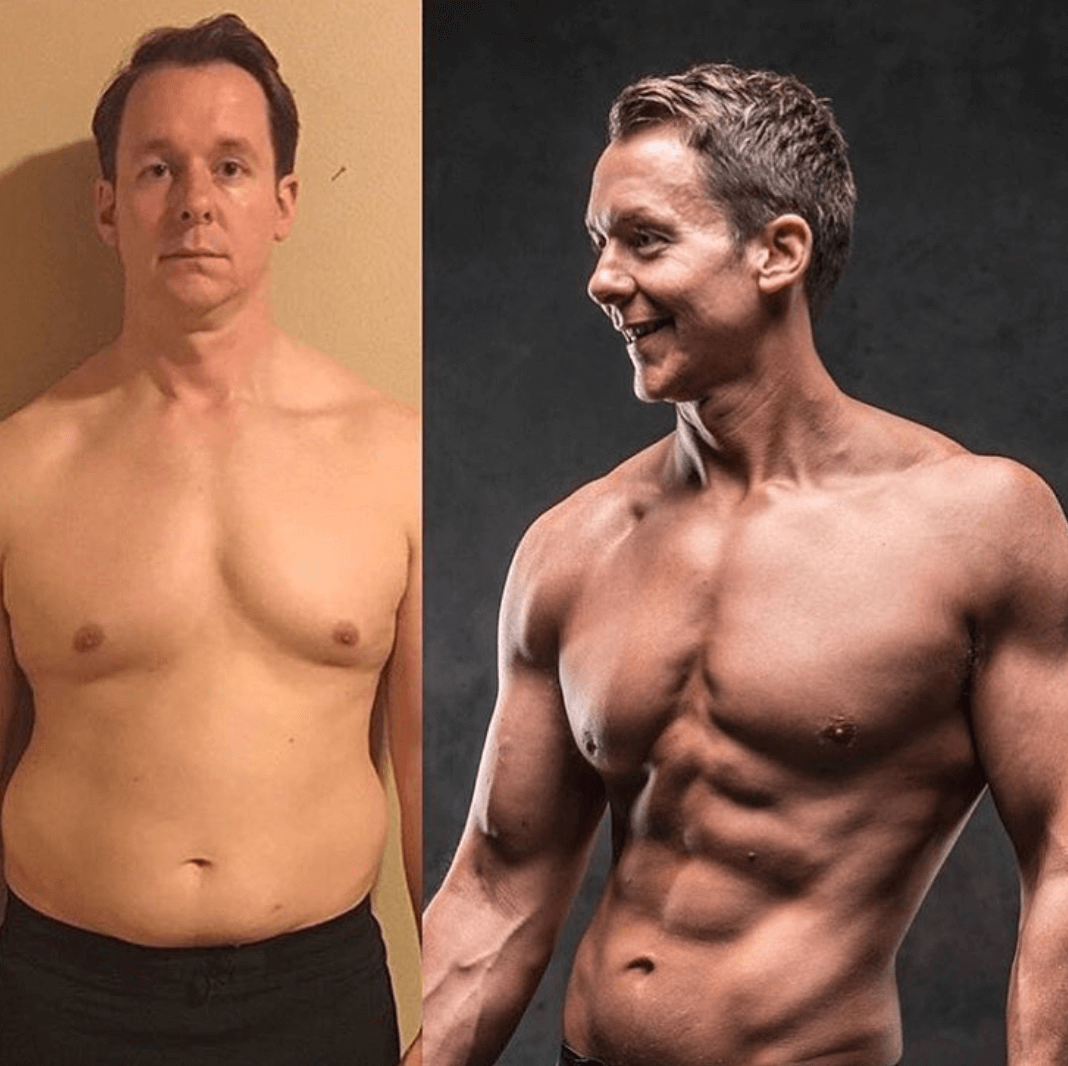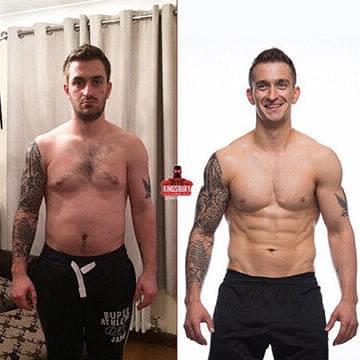Having answered this question so much lately I thought it would best to write a really clear version I can share with everyone who visits my blog.
All the information I am about to share is useful whether you are following one of my plans or not.
This wasn’t a question I would often get in years gone by. But with the boost in popularity of fitness and clean eating has seen a huge rise in the understanding and misunderstanding of macros.
“I am hitting my macros but not seeing results”
I have received this a lot lately and I think it is fantastic that so many people are educating themselves and doing the smart thing when it comes to trying to achieve serious results. It’s a lot more than even some of the other online trainers are doing. But that’s a story for another day.
I want to break this down into several answers so you can almost use it as a checklist and see where the problems may be occurring in your quest to the body of your dreams….
1. What are macros?
Food can be very broadly categorised into a protein, a carbohydrate, or a fat-based food, although hardly ever, will a food be 100% of one macronutrient, especially in a varied and healthy diet.
Let’s look at the example of an avocado – which is comprised of about 20% carbohydrate, 5% protein and 75% fat. Nuts, such almonds, are high in fat like avocados, they are comprised of about 70% fat, 15% protein, and 15% carbohydrate. A fruit like a banana on the other hand are 95% carbohydrate, with a splattering of protein and fat. You can see here how different foods are built up of different macros. This makes designing a menu based on macro percentages a challenge to say the least.
2. Are your calories goal focussed?
Before we get into the breakdown of your macros you need to know what they are breakdown of. Your total calories determine whether you gain, maintain or lose weight. So calories really are king. The macro breakdown tells us how these calories are distributed. You will often see it written as percentages. These percentages tell us how much of your total calories are coming from each macronutrient. Carbs and proteins come in at roughly 4cals per gram and fats come in at 9cals per gram.
In order for these macros to work your calories need to have been calculated accurately to achieve them. I use a complex formula and an experienced eye to determine total calories, then I look at goals, body shape, activity levels and other factors to decide the best macro breakdown.
Accurately calculating your calories is a difficult task and get this wrong and you will have a fundamental problem.
You firstly need to calculate your BMR and then from this look at activity levels to determine your TEE. Once you know this you can calculate your calories.
Weight loss = 15-30% (depending on individual factors) reduction for =TDEE
Maintenance = TDEE
Weight gain 10-25% (depending on individual factors) increase on =TDEE
If you like working this stuff out yourself then have a go here. If you like to get help then let me know!
Conversions: Weight in kg= weight in lbs/ 2.2 Height in cm= Height in inches/2.54
A) Calculate your BMR-The amount of calories required to sustain your current weight while in a sedentary state.
Men: BMR= 66 + (13.75 x weight in kg) + (5 x height in cm) – (6.75 x age in years)
Women: BMR= 665 + (9.5 x weight in kg) + (1.84 x Height in cm) – (4.67 x age in years)
A) Calculate your TDEE (Your Total Daily Energy Expenditure)
TDEE- is the amount of calories to sustain your current weight based on your current activity level.
TDEE: Multiply your BMR by the appropriate activity multiplier:
BMR x 1.1 (very sedentary lifestyle)
BMR x 1.2 (Leisurely walking for 30+ minutes 3-4 days per week/ golfing, house chores)
BMR x 1.35 (Active- Strength training 3 days per week or Circuit training 4 days per week for 30-45 min)
BMR x 1.5 (Very Active individuals Strength training 4-5 days per week and or Cardio for 45-60 minutes per session)
BMR x 1.7 (Extremely active, Super high metabolism- endurance training, heavy intense strength training 6-7 days per week)
An example: at 6’2″, 208 lb, 38-year-old male who is very active. BMR is 2042 and I would multiply it by 1.5 = 3063 for the TDEE
3. How have you determined your macro needs?
Who has decided these for you? Have you determined them yourself? Although calories determine whether you lose of gain outright weight, macros will determine the quality of this weight loss/gain.
If for example you followed a diet only high in carbohydrates, you will more than likely see a negative impact on your body composition.
Also, different people have different needs when it comes to macros, and endurance athlete will require a higher proportion of carbs in their plan than a sedentary individual even if their total calorie requirement are equal. Just like the protein demands of a bodybuilder will exceed that of you and I.
We are all different and should be treated that way. I use a system I have developed to determine these breakdowns of macros to deliver the best results.
If you are looking to figure out your own macros then I would suggest to do your homework, have a look at the different breakdowns and decide which suits your training and body type most effectively. Alternatively, you can leave it all up to me J
4. Are you eating good quality foods?
Good quality foods = good quality gains. Don’t hit your macros with crappy foods, aim for quality ingredients, low GI carbs and organic meats.
If you are following my food plans then stick to the recipes. They have been designed to work for you!
If you are hitting your macros with poor quality foods. Stop, and start eating healthy foods.
5. Are your calories and macros fixed or do they change?
As you progress with your fitness journey you have to ensure your calories and macros are keeping up with your changes. I would suggest you regularly check in and adjust your numbers. Every 4 weeks is normally perfect to keep you on track.
Reasons for changing your cals as you go.
· If your aim is to lose weight and you do lose weight your calorie requirements decrease
· If your aim is to lose weight and your activity levels change your calorie requirement changes
· If your aim is to gain weight and you do gain weight your calorie requirements decrease
· If your aim is to gain weight and your activity levels change your calorie requirement changes
· If your goals change your macros and calories will have to change.
· If your body shape and carbohydrate tolerance improves you may want to adjust your macros
6. How are you tracking them?
How you track your macros can massively impact your results, why you might ask? Because a lot places are getting them horribly wrong for you.
Chances are if you do track your macros you use MyFitnessPal. Have you ever noticed the huge disparities in the same ingredients on there? Yea major problem for you!
When using software like this make sure the ingredients you are pulling in are accurate, double check them and save the reliable ones.
I use advanced nutrition software to create my food plans which helps to reduce inconsistencies. If you want accuracy get a fitness professional to design you meals, not a joke online trainer however. Get yourself one who knows a thing or two about nutrition and results!
7. Are you training hard?
I couldn’t cover a question about results without looking at training. Ask yourself if you are really training hard or if you are just running through the motions. If you are training half arsed then your calorie expenditure probably isn’t stacking up correctly.
Either train harder or reduce your TEE to accommodate the lack of intensity.
8. Do I really need to know my calories and stick to my macros?
If you have goals, then you do. If you don’t have goals, then you don’t.
The same food plan delivered to two different people could result in very different outcomes. I have had people on 4500 calorie weight loss plans and others on 2200 calorie muscle building plans. We are all different and should be treated that way.
If you want to achieve a goal then not knowing your calories and macros is like driving with your eyes closed. You will go somewhere but probably not where you want to go.
9. How long have you been hitting your macros?
If the answer is in hours or days or even weeks then there is another factor you need to implement. Patience.
This stuff doesn’t happen overnight. If you are looking to get into great shape and be healthy it is a full time venture not a quick fix. You have to work at it consistently.
If you haven’t made a start yet then what are you waiting for! If you have then implement all the information above and come back to me in 8 weeks (to show off your results)
I hope this has helped you to get a grasp of where you might be going wrong with your nutrition and why having a custom food plan is so important for serious results.
When you are putting so much effort into your training and food prep don’t let your calorie calculation and macro split sabotage your results.
If you would be interested in receiving hundreds of recipes at your exact calories and macros every month that adapt to your results, then register your interest now.










